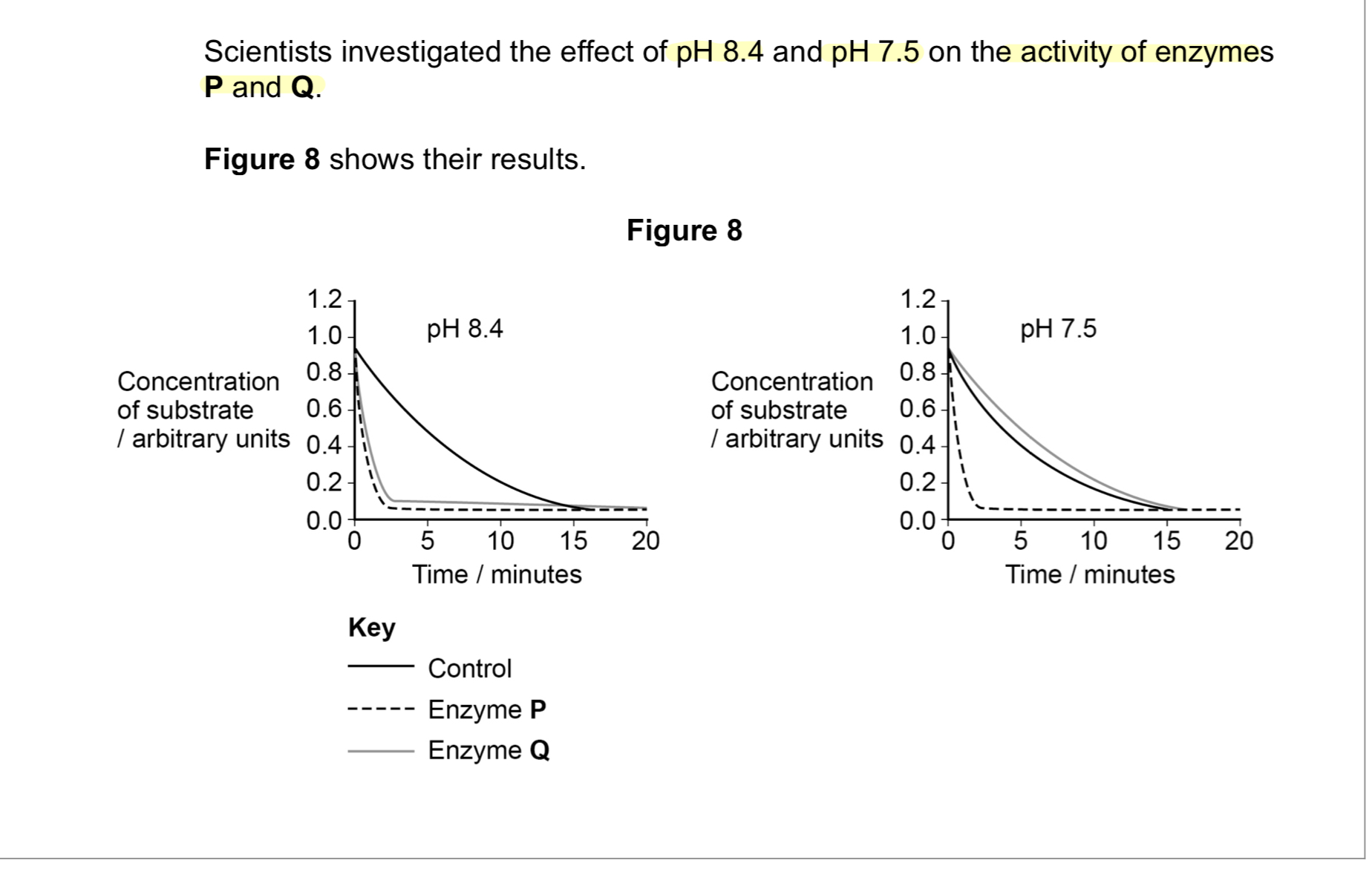Bio paper 1 2022
1/5
There's no tags or description
Looks like no tags are added yet.
Name | Mastery | Learn | Test | Matching | Spaced |
|---|
No study sessions yet.
6 Terms
The APs damage prokaryotic cells but do not damage the eukaryotic cells in the organisms that produce them. Prokaryotic cell membranes do not contain cholesterol. Assess why the APs do not damage the eukaryotic cells of the organisms that produce them
-eukaryotic cells contain cholesterol which helps the structure maintain there shape and the phospholipids become less fluid or more rigid. (1)
-AP can’t enter the eukaryotic membrane (1)
Scientists observed these APs on prokaryotes using a transmission electron microscope. They stained the APs using a monoclonal antibody with gold attached to it.
Suggest how these techniques allowed observation of APs on prokaryotes.
- Antibody binds to AP (1)
- Antibody is complimentary to AP (1)
- Gold interacts with the electrons and TEM has a high resolution allowing the AP to be observed (1)
Explain how two enzymes with different amino acid sequences can catalyse the same reaction
-similar shape of active sites (1)
-forms an enzyme substrate comples (1)

Describe what the scientists should place in the control tubes in this investigation
-Same concentration of buffer solution (1)
-Same concentration of substrate (1)
-Same concentration of denatured enzyme (1)
The higher rate of transpiration at high tide shows that the mangrove tree is absorbing
water from the sea water surrounding its roots.
Describe an experiment that you could do to investigate whether the mangrove root cells have a lower water potential than sea water.
You are given:
• a piece of fresh mangrove root
• sea water
• access to laboratory equipment
(This is the osmosis practical)
-measure the mass of the mangrove at the start and the end
-place sea water at equal times
-take the mangrove out of the tube and dry with fissure to remove the surface water
-Higher mass lower water potential
The scientists broke open the cells to produce a suspension of cell contents.
Describe how the scientists would remove large organelles from this suspension of cell contents.
- use centrifugation (1)
-denser organelles removed from pellet